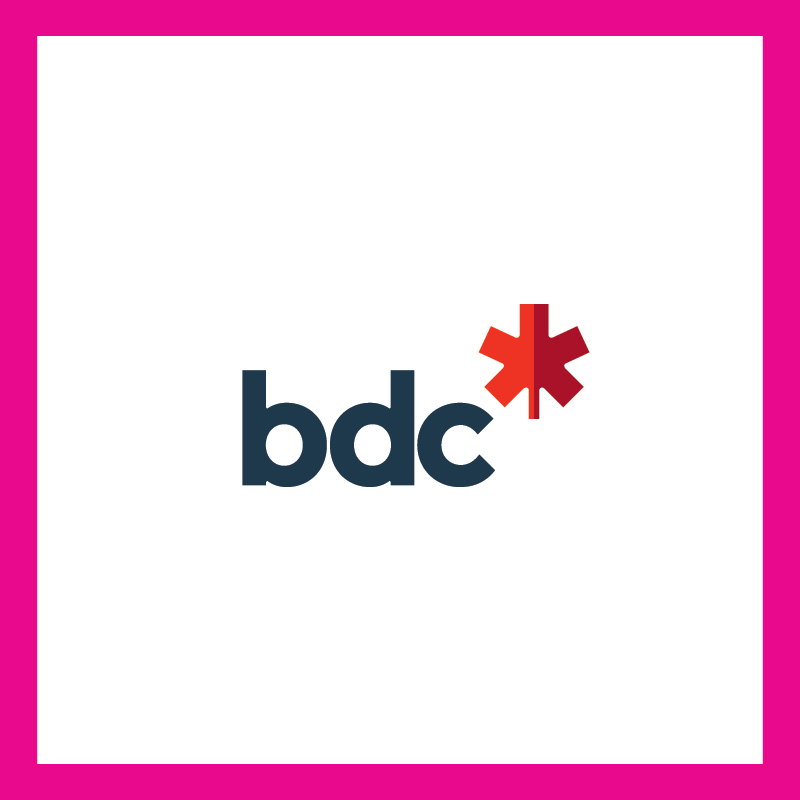Break free from your box with Boon Ong
Engineer by day, passion photographer by night. Come on a journey and let go of your inhibitions with Boon Ong, one of the artists featured in our 2022 Pride in Art exhibition.
Pride In Business: Why did you choose to become a photographer?
Boon Ong: I have always been attracted to anything that relates to my creative side. Back in my twenties, I started doing contemporary dancing and then evolved to theatre production. When I moved to Calgary in 2008, I left all of that behind to focus on my career in engineering for a little. I got back into the art realm as I was preparing my wedding back in 2010. We hired a photographer to shoot our engagement and wedding photos and found the process so exciting that I decided to buy a camera. Pretty much right after my wedding, I enrolled in some evening classes at ACAD just to learn the basics, and then I’ve been shooting ever since.
PIB: What attracted you to the boudoir style?
BO: At first, I started by doing a lot of family portraits, personal portraits, weddings, or events. And then two years later, I joined some studio workshop that happened to have a nude model in it. After that I decided to start exposing myself and found it nerve wracking at first but as I kept doing it and shooting it, I started to quite enjoy it in a slowly narrowed down to just your lifestyle. Some folks call it boudoir, but I find it slightly different, because in boudoir you must doll up the person. I prefer to do it the old way, with more of a minimalistic approach and focusing on the human connection. Through my photographic work, I realize that I like the human connection.
PIB: How did your life experiences growing up in Malaysia influence your work?
BO: A lot, there's this story behind that. I first started shooting nude art and if you were my friend, you are probably going to tease me like “why are you doing this new thing, and how does it feel like?” And then I posted a nude picture of myself online, and I got a call from my mom pretty much right away. Usually, I would be the one calling my parents weekly, not the opposite. She just started to yell at me like “why the heck you put yourself out on the website and show all of yourself to people.”
Growing up in an Asian family, it is difficult because our parents want their sons to be an engineer, a doctor, or a lawyer… She didn’t like the idea of me doing that as it could jeopardize my career, and then she said, “you’re a disgrace.” And I was extremely upset with that comment. I just hung up on her after that comment and didn’t talk to her for a bit. I wasn’t upset that she called me a disgrace due to me posting a nude picture of myself, but more because I haven’t told her yet that I am a gay man.
At that point, I was already married for a few years, and she didn’t know. The rebellious side of me, the naïve side of me wanted to continue shooting nude art because in a way nudity has now become a part of my sexuality. The shoot feels like yelling for freedom. It is a way of expressing myself and the more I connected with human and listened to their stories, I realized we all share the same commonality. Regardless of our sexuality, there is always something to come out of, a meeting, being trapped in your career, insecurities with your body, housewife trapped within the family and having lost themselves taking care of everyone else or being trapped in a relationship. I saw all the similarities that people go through and associated it to my own sexuality and my experience with my parents, and that’s why I find it meaningful to continue to shoot human beings in their vulnerable form, since every human is trying to get out of a shell. Just get nude, it is very daunting and extremely liberating.
PIB: Wow that’s amazing, and if you don't mind me asking, does she know about your sexuality?
BO: Yes, I think she was kind of aware back in 2014-2015. But I came out to her at the wrong place, wrong time in 2018. I was waiting for her to ask me. But then we were in a hospital in Malaysia, right outside the operation room and my dad was having an open-heart surgery. She asked me about it while we were waiting. And I just came out to her. In a way it was good since it distracted her from what was happening with my father. We were really worried about her reaction to my dad’s surgery, and I was glad to help distract her, but I also knew that I was putting a burden on her shoulder.
It's been quite a few years, and it has not been easy. She's still not fully accepting it, but it is what it is. So, it becomes her own box to open, that box that I may have shuffled her in. She is going through her own journey. I try to normalize conversation as much as possible to help her understand that we as gay men are just like every other human being.
PIB: What are the different themes you are exploring with your photography?
BO: At the beginning of my career even while shooting weddings, events, and family portraits, I always enjoyed human connection and to tell a story through my work. Even now, with my art, I want to showcase people trying to get out from their shells and capture their true persona. My work always involves the relationship and the story of that person and their own environment, as I always shoot on location. With my work, I want to expose who you truly are and your emotion in a short story. Beyond that, I can add more elements such as diversity, man, woman, different body shapes and different colours. In recent years, I decided to inject more of what I want in my art, combining my vision to their story. I want to explore a kinkier side like bondage, which is a representation of my own sexuality evolving.
PIB: What is the message you want people to remember after having seen your art?
BO: The message I want them to remember is to be who you are, come out and live life. The whole pieces selected for this exposition are in reference to a person in captivity. For these photos, I wanted to capture how the person is in the closet and wanting to get away from it, even though they are still held in captivity.
PIB: You are well-renowned for the use of nude photography to create stories, what made you choose to go with this type of photography?
BO: I am still shooting family portraits. However, on my social media, I chose to narrow it down for branding purposes. Nudity for me is a way to yell my sexual freedom, and an indirect way for me to allow that freedom to be heard. If I am asking you to come over and shoot you within the next two hours, at first you will feel uncomfortable, but the special power of it is that it doesn’t have to be erotic or sexual. The moment you are asked to get naked is very daunting and that is the unique part of the beauty there and represents the discomfort. But at the same time, when you really do it, it's so liberating. It is a very vulnerable experience yet at the same time extremely empowering.
PIB: Who are some photographers or directors that inspired your work?
BO: Menelik Puryear is a fashion photographer that goes by the Instagram handle @hardciderny. He mostly shoots male models. He influences me because his shots are very lifestyle, careful, chill and relaxed all at the same time. Taking away the sexy bodies he has access to, there are many layers to the environment and the shots always have very technical elements into them.
Two other influences for me are from Asian directors Wong Kar Wai and Ang Lee. They are responsible for the movies In the Midst of Love, Sense and Sensibility and Brokeback Mountain. The reason why I liked Ang Lee is because of his storytelling. No matter what type of movie he is working on, he will do his research and will present the aesthetic and the mood and the feel of that specific era, century or culture. I appreciate his abilities.
PIB: Why is it important for you to show a diversity of body type in your work?
BO: I want to respond with another question for you. Why is it not important? And no one can answer why is it not important. It's very important, because that's how the real-world functions, right? It's never just what the media shows.
In reality, there are different sizes. When you are surrounding yourself with family or friends, we all are diverse, different body types, different skin tone, different culture, and we should celebrate that. The judging shouldn’t be discriminating. It just doesn’t feel right. We should change that question to, why is it important to celebrate that? Whenever we say we shouldn't celebrate it, it shows we have a problem, right? When I get that question, I always like to answer, “why not?” I shouldn't even be spending time to explain
PIB: I think it's good that the fashion industry is picking up on this and recognizing it, because it's important. And it's beautiful to see it finally.
BO: But I think my acceptance of body is very broad. As much as possible, we should celebrate different bodies and shapes. Often, you see people with a normal body, discriminating people that have a six-pack. And they will just use someone who is a bigger size. Yes, people with a bigger size should be celebrated and not discriminated. But at the same time, we should also acknowledge these folks that have a good body shape, are fit, and could be a fashion model. If you really think about it, there is a lot of effort that goes into the time they spend to look the way they want. And if someone wants to alter their appearances with Botox and surgery, there is nothing wrong with that, as they are celebrating themselves. So, my way of saying the reason acceptance is not just big body or not fit body, we should celebrate that you really put a lot of effort in it and kudos to you. And let’s not forget, these models are also human beings with their own closet.
PIB: You have participated as a speaker and educator in a series of conferences, what made you decide to take on that role?
BO: So at the beginning, it was an honour because I like sharing, right? It was really daunting, and I have imposter syndrome. Like, “who am I to tell people about that?” But again, every first step, it's always daunting, just like the first time getting naked, walking to a gym, going to a new job or going on a date. It is all daunting. But once I started doing it, I truly enjoyed the human connection. I like to share.
It offers me another avenue to be creative and develop storytelling through words. If you go to my website, there is a blog section. Every blog post is a journey, there is always music accompanying. Click on it, read the story, see the sequencing of the photos, and listen to the music that is available to you. It is intentionally created to tell a story. When I am going to a conference, it is a different way to connect with people and get to share a story. How do I make people laugh or cry, I get to be in control of their emotions.
PIB: The main goal of your art is to advocate new freedom, break down barriers and taboos while creating a safe space and building people's confidence in their body and sexuality. What made you choose to advocate for people in this way?
BO: I want to celebrate everyone, every human being. One of my strong strengths is individualization, I am good at working with individuals. I suck at groups and, for me, it is a struggle when I go to a party. I don’t only want to have a perception of the person by looking at their exterior because after working with so many people, I truly believe everyone has a story to celebrate and struggle to talk about. Not only that, but I don’t want to limit myself past my form of art and create more boxes in my life.
Furthermore, I want to celebrate all shapes, colours, sexuality and where they live, just like a rainbow, it is so fascinating to me. And what have I done to show that, I think my work already speaks for itself. If you go through my website, you can see that I have already been achieving my goal, but I still want to evolve and celebrate more people and their stories without putting myself into a box anymore.
PIB: How has it been to own your business for the past seven years?
B.O: It’s been dependent since it has changed quite a lot, I am not shooting as much as I should be due to obvious reasons. There are fewer people engaging to shoot with me, and there is less opportunity to talk. But with things opening up again, I want to go out and shoot more. I am bringing an exhibition to Malaysia at the end of June for a pride event back there. They are responsible for showcasing my work. This is an avenue I am also looking more into. Malaysia is far more conservative, but I feel grateful for the opportunity, and I feel it is a big step forward for that country. It is a passion career for me, as I am still an engineer, but I want to still accumulate experience.
PIB: What would be the legacy you hope for with your work?
BO: I want to inspire others to do what I do. When you come out to one of my exhibitions or my workshop, if you pick up one thing away from what I say or what I show and use it in their life, it is good enough. If there are more people bringing more acceptance and diversity, that will be a small contribution, I don’t want to use the word legacy. Legacy is too big, but if you pick up something, I am happy. Did you pick up something from this chat?
PIB: Definitely! I like your vision that every aspect of our life is a box that we have to decide to stay in or break out of. We are in control as to how much we choose to open or break the boxes. As gay men, we often think of the closet but if we start to look around there are so many closets. I really appreciate this moment we got to share together, and I feel like the main themes of your art truly transcend through your work, and I look forward to experiencing more of it.
Website: boonongfiguratif.com
Instagram: @bofiguratif
ABOUT THE AUTHOR
Simon Trudel-Lachance
PIB — Sponsorship & Membership coordinator / Content Writer
Pride In Business article in partnership with TD.
By Simon Trudel-Lachance
Pride In Business article in partnership with TD.
By Simon Trudel-Lachance











